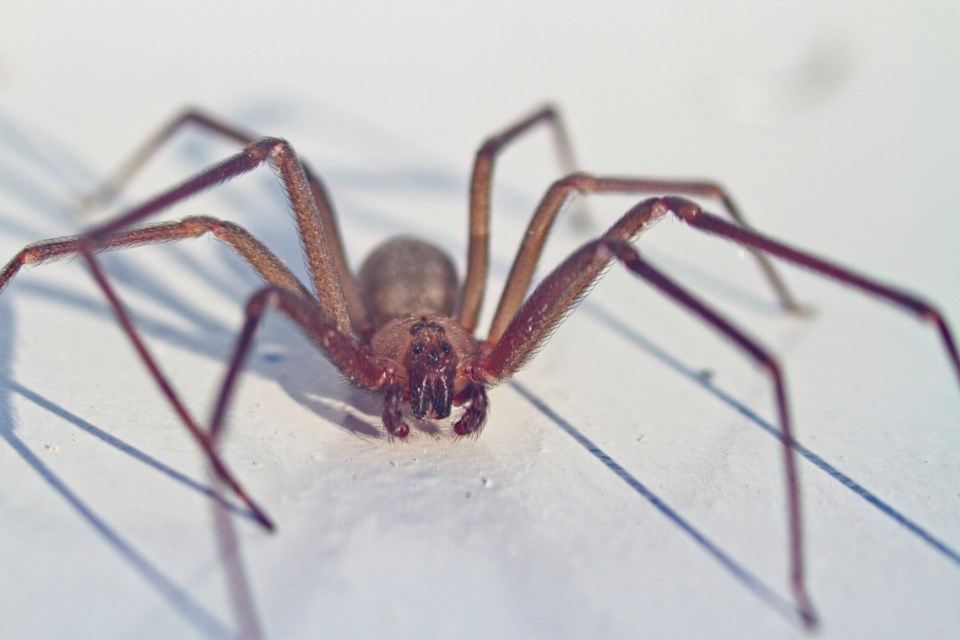They’re creepy, they’re crawly, and they might scare the living daylights out of you — but they won’t kill you. At least not in the Lower Mainland, anyway.
That’s the general consensus among arachnologists about spiders in British Columbia. Even the most dangerous local inhabitant, the black widow, doesn’t pack enough venom to usually do serious damage. Further, the chances of one of these petite creatures biting you is extremely rare — they want even less to do with you want to do with them (even if that seems hard to believe).
Of course, black widows have bitten people and their bites may cause a harmful reaction. While the small amount of venom they produce gets quickly diluted by the human body, their bites may cause muscle contractions. As with any toxin, the effects depend on the individual spider and person. People who are very young or old, as well as people with compromised immune systems, are more likely to suffer.
With this in mind, there is another arachnid that has caught the fearful imaginations of Canadians: the brown recluse.
These spiders have six eyes rather than eight, and bodies are a quarter-inch to three-quarters of an inch long. While the brown recluse is not native to the province, many people claim to have encountered the spiders. In fact, a number of individuals even claim to have been bitten by the small brown spiders.
Â鶹´«Ă˝Ół» spoke to Dr. Robb Bennett, research associate, Royal BC Museum, who broke down a few misconceptions about recluse spiders as well as appearances of the creatures in B.C.
“The reality is that we only have one record of a recluse-type spider in the province, and that was around 1958,” he notes.
Bennett reports that there was a more recent sighting of a recluse specimen about five years ago, but that was in Alberta; the spider was found in some packing material.
“People used to be improperly diagnosed with recluse bites by doctors, and they wouldn’t receive proper treatment as a result,” he describes.
In fact, Bennett remarks that everything from syphilis to bed sores to cankers used to be misdiagnosed as spider bites. People would often tell their doctors that they’d been bitten by a spider, when nothing of the sort had taken place.
He adds that even if there were recluse spiders in B.C., it would be highly unlikely that they would hurt anyone. Although the spiders cohabitate with humans in the southern United States, bites are uncommon. In addition, most bites do not result in significant harm, and very few would result in death.
Bennet also mentions a study in Kansas of a house that had over 2500 brown recluse spiders in it, where people had been living safely among the creatures.
As for spiders of B.C., Bennett says that people really don’t need to be worried. There may be a great deal of spiders in the province, but they aren’t harmful to humans. According to the Electronic Atlas of the Wildlife of British Columbia, there have been a whopping 859 species of spider confirmed in B.C. What’s more, the, “spider fauna of the province is estimated to be more than 1000 species.”
“I’ve been bitten 20 to 30 times over the course of a 40 year career by various spiders. Of those times, bites have broken the skin twice. And, of those two times, one bite caused a small pimple,” assures Bennett.
To find out more information about identifying spiders in B.C., visit .



